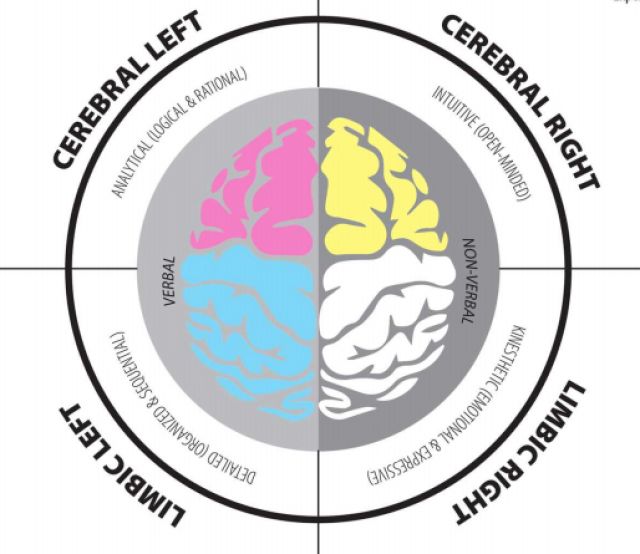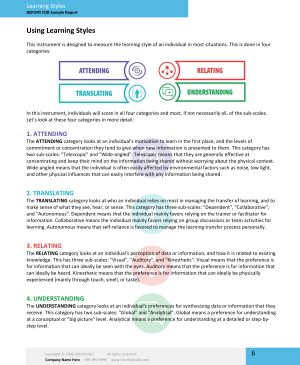LEARNING STYLES
IDENTIFY LEARNING STYLES
The Learning Styles assessment does just as its name implies; it identifies each individual’s best means for learning and retaining new information. Some people like to process information through text, while others need visual support and images. Some learners best assimilate information alone, while others prefer to work in groups. There are those who can grasp information intuitively, while others prefer to follow a strong sequential path. In essence, understanding learning styles offers the key to maximizing an organization’s training investments, enlightening its management teams and even assembling top performing teams.
Four Learning Categories include:
- Attending
- Translating
- Relating
- Understanding
HIGHLIGHTS
Evaluation of Learning Styles
No Right or Wrong Answer
It’s important to note that there are no right or wrong answers when it comes to learning styles. In the final analysis, the essential value in any instrument is the extent to which it provides a useful indicator of in individual’s personal way of operating. Ideally, this should encourage self-reflection upon whether any personal adjustments are either necessary or desirable. From an organization’s perspective, it should help management to reflect upon its own training and development strategies.
Facilitating Learning Transfer
If individuals understand their overall learning cycle and their individual
strengths and weaknesses, biases, and preferences, they will more readily be able to adjust their whole approach to learning
and building knowledge. The desire
to further understand learning styles is the first step in determining your own personal “recipe” for effective learning in the
future.











